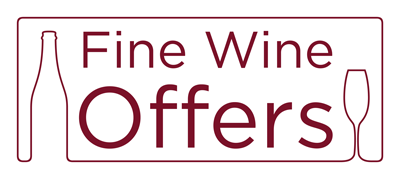Glenelly - The Best Of Both Worlds
The Glenelly Estate is in the Ida's Valley, located in Stellenbosch, on the southern slopes of the Simonsberg Mountain. Its origins date back to the seventeenth century. Simon van der Stel, Governor of the Cape, gave the land to the Huguenot François Villion. In 1812, the estate passed to Johan Peter de Villiers, and finally, in 1911, it became the property of a British family, the Garlicks. They owned it for 92 years until it was purchased in 2003 by May-Eliane de Lencquesaing, who for over 30 years was the owner of the famous Bordeaux Chateau Pichon Longueville Comtesse de Lalande, Pauillac Grand Cru Classé.
Aside from the obvious connection of Madame de Lencquesaing, it is interesting to draw parallels between the wine regions of South Africa and those of Bordeaux. As with the Médoc, the Cape vineyards are located between two bodies of water, the Atlantic Ocean and Indian Ocean, and they enjoy a temperate microclimate conducive to ripening grapes. These vineyards are sometimes planted on mountain slopes, such as in Stellenbosch; sometimes in valleys, like Franschoek; or on plateaux, as in Paarl. Because of the slightly more Mediterranean temperatures, the differences in these terroirs can be likened to those that exist in Bordeaux between the regions of Saint-Emilion, Pomerol, Graves and the Médoc. In South Africa wine is usually drunk in its first flush of youth but, true to the tradition of Bordeaux, Glenelly produces wines with the potential to age and improve for quite some time.
South Africa's vineyards were first planted by émigré Huguenots in the seventeenth century - at much the same time time as Dutch engineers were draining many of the swamps around Bordeaux, enabling vineyards to be planted in the Médoc. As in much of Europe, at the end of the nineteenth century South African vineyards were hit by phylloxera; vines were uprooted and some areas were replanted with fruit trees. This was the case at Glenelly - when Madame de Lencquesaing first saw the estate's potential it had been run as a fruit farm for over 90 years.
After an exhaustive study of the soils and the weather patterns, the 123 hectare Glenelly Estate saw the planting of 54.5 hectares of red grape varieties, 5.5 hectares of white varieties and 5 hectares of olive trees. At the centre of this impressive circle of mountains, vineyards and olive groves lies the Manor House, built in the Cape Dutch style of white walls and a thatched roof, surrounded by newly renovated farm buildings and beautiful gardens. Four lakes provide water, whilst the native flora and fauna add to the beauty of this area. 2009 saw the inauguration of Glenelly's new 6,000m², four storey, gravity fed winery, anchored in the mountains and designed to operate in the most environmentally friendly manner possible.
The winemaking philosophy at Glenelly is one of minimal intervention at every stage. Good grapes make good wine, so the grapes are carefully sorted upon arrival at the winery. Glenelly harvests earlier than most of its neighbours to try to achieve lower alcohol wines that retain their freshness, yet still have ripe tannins. The wines are made in the most "hands-off" fashion as possible: using ambient yeasts, with no additions of acidity etc.
The climate of Stellenbosch regularly produces a quality of fruit all too rarely encountered in Bordeaux and the classic, French stylings of the Glenelly team ensure that these are wines of the finest pedigree that appeal to lovers of the old and new worlds alike.
As Neal Martin observed in his recent article on South African wines for Robert Parker's Wine Advocate: "It was a consistent set of wines from Glenelly, and as I suspected, they are more precise than ever, you could argue more Bordeaux-like in some ways. Their flagship Lady May is one of the best Bordeaux blends you will find in Stellenbosch, whilst the 2009 Grand Vin de Glenelly is one of the very few wines that convincingly justified its late release."
You can explore the full range of Glenelly wines here and, by way of an introduction to this excellent estate, you can save 10% off this mixed case of six bottles.



